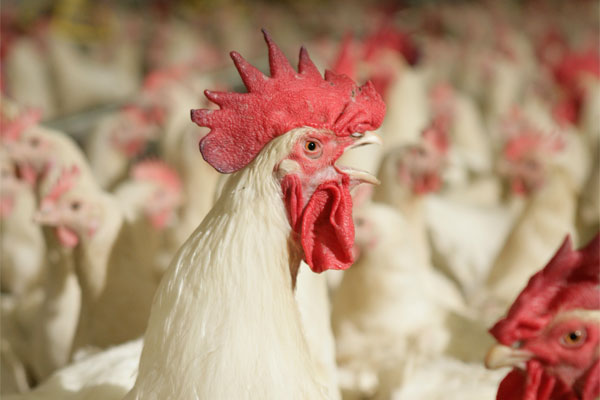Managing breeding stock for optimal performance

Health, hygiene and good management of the farm as well as the breeding stock is essential the best performance of the business. World Poultry asked Tom Procter and Dominic Smith, of Cobb Europe, for their top tips for achieving better performance from breeding stock. Tom works as product manager, Dominic is quality assurance manager responsible for Cobb farms and hatcheries in the UK, Ireland and the Netherlands.
1. Chick start
Start on house preparation well before the birds arrive on site, paying particular attention to the brooding period which is critical to give the birds the best possible chance of maximising performance. The first 14 days of a chick’s life sets the precedent for good performance. Stocking density should take into consideration environmental or local climatic conditions. Remember males will be significantly heavier than the females and should be given extra floor space to help ensure they achieve target body weight. A stringent disinfection program should be in place which is regularly monitored and reviewed. Pre-heating of the house is essential, ensuring adequate time to achieve the correct house temperature, ideally 30 – 31 (C with a minimum floor temperature of 28 (C. Check the chicks two hours after the placement to ensure they are comfortable with their environment. On arrival the chicks should have good access to fresh feed and water, using supplementary drinkers for the first seven days.
2. 16 to 24 week management
This is a critical period for ensuring that the birds have a high degree of uniformity, and are the adequate weight and in the right condition, for transfer to the production site. Female parents should achieve sufficient bodyweight gain between 16 and 20 weeks of age to maximise peak egg production and maintain post peak persistency. The rearing farm will have achieved its objective if it has provided the highest quality birds for the production farm.
Broiler breeder hens come into lay in response to increases in the day length when made at the appropriate time. The response of the hens to light stimulation is based on their condition, body weight and age. Accurate weighing, good observation and handling is essential to determine when a bird is ready to respond to day light increases. Delay light stimulation if the flock still contains significant numbers of underweight birds.
3. Male Management
It’s important to remember males make up 50 percent of the flock in achieving the maximum number of fertile hatching eggs. Firstly, ensure that farm managers are well trained and have sound knowledge of what makes up a quality male and how to achieve this. The objective is to produce and maintain quality males to ensure the highest levels of fertility throughout the flock. It’s essential to keep the feed and body weight continually increasing but well under control.
A quality male will have an upright body shape, be active and alert, show good color in their combs and vents, and not have too much or too little ‘fleshing’. Males in poor condition should be removed while maintaining the correct ratio. Poor condition males will show very little colour in their combs and vents, have very little fleshing and can be observed as being ‘hunched up’ in their appearance. Males which are clearly overfeeding with very heavy fleshing should also be removed.
4. Post peak feeding management
Remember that the hen carries half of the genes responsible for broiler performance seen in her progeny. This means that females can become overweight, which may lead to problems with persistency of lay and fertility in the later stages of life. Therefore, be particularly careful in feeding the flock after peak production.
The key to controlling female body weight is to have a good understanding of each individual flock so you know when to decrease feed. Periodic handling of the hens, along with weighing, is necessary to determine subtle changes in body composition, condition and body reserves of the hens as well as looking at peak production, egg mass and observing feed ‘cleaning up’ times.
5. Egg Handling
Good practice collecting and grading eggs, egg hygiene and storage are fundamental to maximizing hatchability and chick quality which can only be achieved when the egg is held under optimum conditions between laying and incubation. Remember that a fertile hatching egg contains many living cells. Once laid, its hatching potential can at best be maintained — not improved. If mishandled, hatching potential will quickly deteriorate.
Nest boxes should be kept free from droppings, litter and broken eggs. Collect eggs at least four times daily. Be aware that egg temperatures within the nest, particularly during hot weather, may be similar to those in an incubator so regular collection is essential. Collect floor eggs regularly, more often than hatching eggs, which is especially important as the birds come into lay. Keep them separate from hatching eggs.
Focus on quality when egg grading, have a clear idea of what constitutes a good hatching egg and disregard all others, eg dirty, cracked, misshapes, etc. Eggs should be allowed to cool down gradually to the farm egg store temperature (refer to breeder company guidelines for exact temperatures) before putting them into store. Maintain the egg store at all times according to the correct temperature with relative humidity of 75%. It’s key to remember that temperature fluctuations — whether on farm, during transport or at the hatchery — will cause higher embryonic mortality and poorer chick quality.












